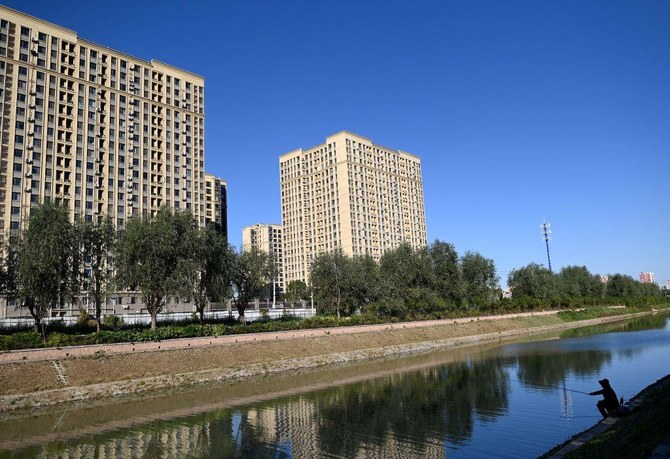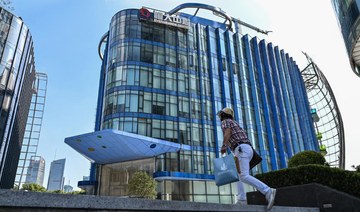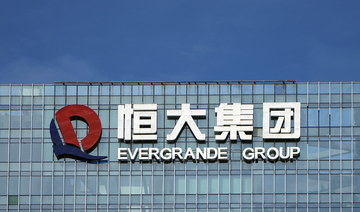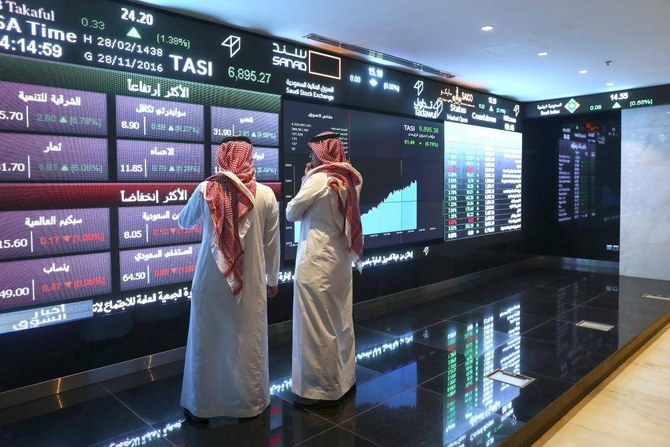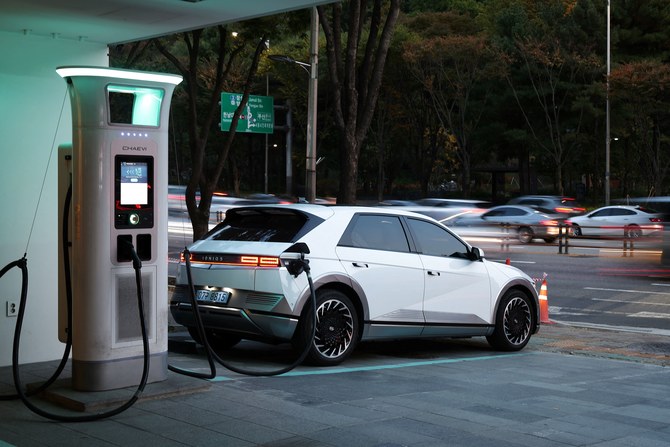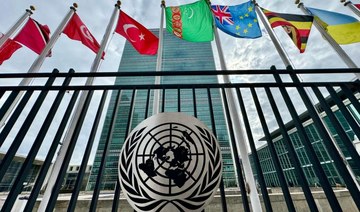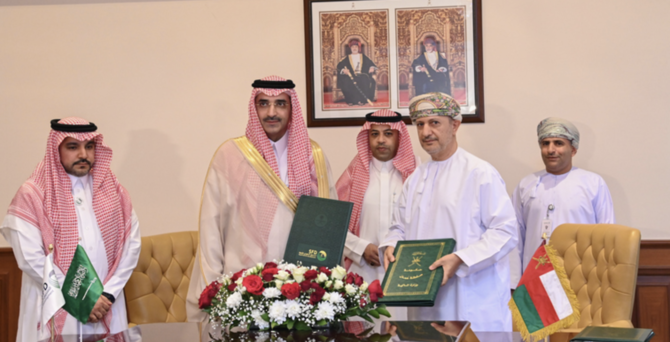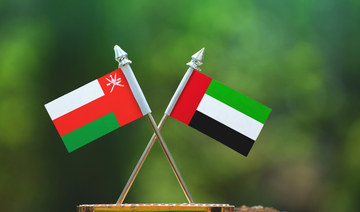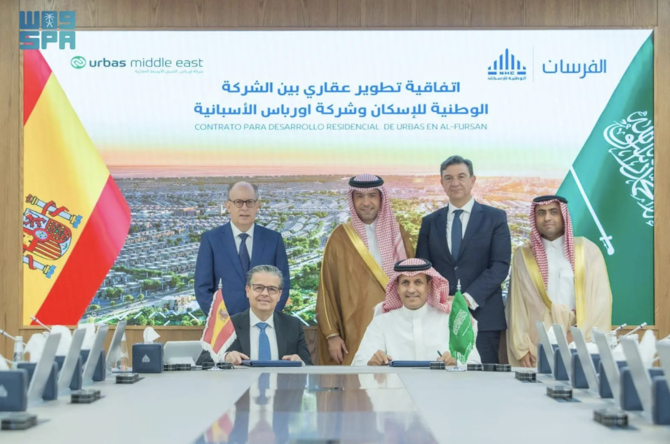HONG KONG/SHANGHAI: China Evergrande Group has supplied funds to pay interest on a US dollar bond, a person with direct knowledge of the matter told Reuters on Friday, days before a deadline that would have seen the developer plunge into formal default.
The person said Evergrande remitted $83.5 million to a trustee account at Citibank on Thursday — as earlier reported on Friday by state-backed Securities Times — allowing it to pay all bondholders before the payment grace period ends on Oct. 23.
News of the remittance will likely bring relief to investors and regulators worried about a default’s wider fallout in global financial markets, adding to reassurance from Chinese officials who have said creditors’ interests would be protected.
Still, the developer, saddled with $300 billion in liabilities, will need to make payments on a string of other bonds, with the next major deadline to avoid default only a week away and little known about whether it is in a position to pay those debts.
“They seem to be avoiding short-term default and it’s a bit of a relief that they have managed to find liquidity,” said a Hong Kong-based debt restructuring lawyer representing some bondholders, who did not want to be identified.
“But still, Evergrande does need to restructure its debt. This payment might be a way for them to get some sort of buy-in with stakeholders before the heavy work needed on the restructuring.”
It was not immediately clear how cash-strapped Evergrande was able to raise funds for paying the bondholders or whether any bondholders have already received the money.
Evergrande did not respond to Reuters’ request for comment. Citibank declined to comment. The person with knowledge of the matter was not authorized to speak with media and so declined to be identified.
News of the remittance comes a day after financial information provider REDD said Evergrande had secured more time to pay a defaulted bond it guaranteed, issued by Jumbo Fortune Enterprises. “This is a positive surprise,” said James Wong, portfolio manager at GaoTeng Global Asset Management, who had expected a default.
The news would boost bondholders’ confidence, he said, as “there are many coupon payments due ahead. If Evergrande pays this time, I don’t see why it won’t pay the next time.”
Evergrande missed coupon payments totalling nearly $280 million on its dollar bonds on Sept. 23, Sept. 29 and Oct. 11, beginning 30-day grace periods for each.
Subsequent non-payment would result in formal default and trigger cross-default provisions for its other dollar bonds.
Evergrande’s next payment deadline is Oct. 29 with the expiration of the 30-day grace period on its Sept. 29 coupon.
TEMPORARY RELIEF
Evergrande’s dollar bond prices surged on Friday, with its April 2022 and 2023 notes jumping more than 10 percent, data from Duration Finance showed, though they still traded at deeply distressed levels of around a quarter of their face value.
Its shares rose as much as 7.8 percent, a day after trade resumed following a more than two-week halt pending the announcement of a stake sale in its property management unit, which was scrapped this week.
Evergrande’s woes have reverberated across the $5 trillion Chinese property sector, which accounts for a quarter of the economy by some metrics, with a string of default announcements, rating downgrades and slumping corporate bonds.
In the latest such move, Fitch Ratings on Thursday cut Sinic Holdings (Group) Co. Ltd’s long-term foreign currency issuer default rating to “restricted default” from “C” as the developer failed to repay its $250 million notes due Oct. 18.
Still, the Evergrande news helped the Hang Seng mainland properties index surge more than 4 percent versus a gain of 0.25 percent in the broader Hang Seng index.
It also helped Evergrande’s smaller peer Kaisa Group Holdings Ltd, whose dollar bonds surged in price.
Kaisa was the first Chinese developer to default back in 2015 and the Evergrande crisis has put it back in the spotlight.
In mainland markets, the CSI300 Real Estate index jumped as much as 6.5 percent, and an index tracking the broader property sector was eyeing its biggest gain in nearly two months.
When asked whether it will step in to help its rival to ease its liquidity crisis, Chairman Yu Liang of the nation’s third-biggest developer, China Vanke Co. Ltd, said developers needed to ensure their own safety first.
“Everyone feels the chill as ‘winter’ arrives for the sector... Whether we can pass this winter safely is still unknown,” Yu told a company forum on Friday.
FREEWHEELING
Evergrande’s woes had been snowballing for months. Dwindling resources set against more than $300 billion of liabilities had wiped out 80 percent of its value.
Founded in Guangzhou in 1996, the developer epitomised a freewheeling era of borrowing and building. But that business model has been scuttled by hundreds of new rules designed to curb developers’ debt frenzy and promote affordable housing.
Analysts said any prospect of demise would raise questions over what would happen to the more than 1,300 real estate projects Evergrande has ongoing in over 280 cities, and any impact the wider property sector.
Bank exposure to developers is also extensive. A leaked 2020 document, branded a fake by Evergrande but taken seriously by analysts, showed the company’s liabilities extending to more than 128 banks and over 121 non-banking institutions.
“Given that we have little clarity on how bank financing is going for stalled real estate projects, but we know that project pre-sales are down a lot, the onshore business is unlikely to be supplying cash to Evergrande near-term,” said analyst Travis Lundy at Quiddity Advisers in Hong Kong.



